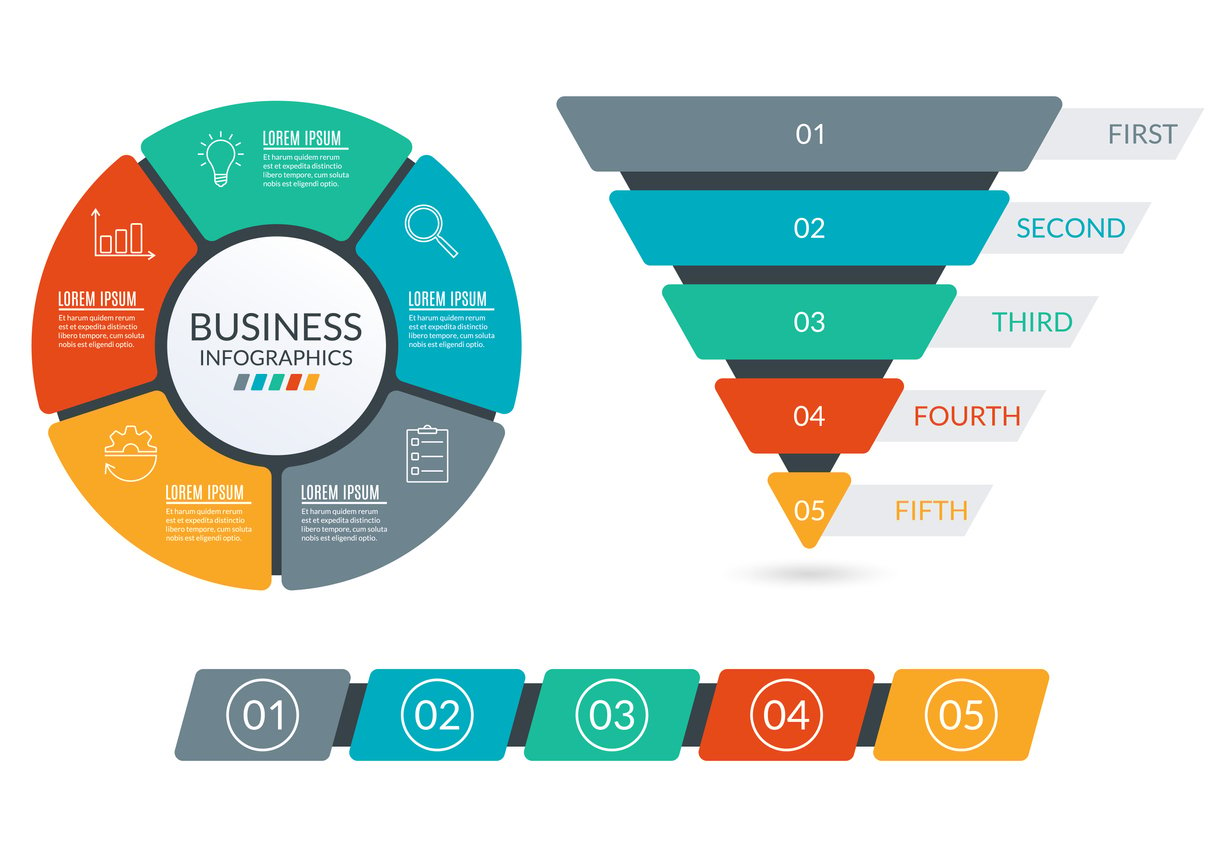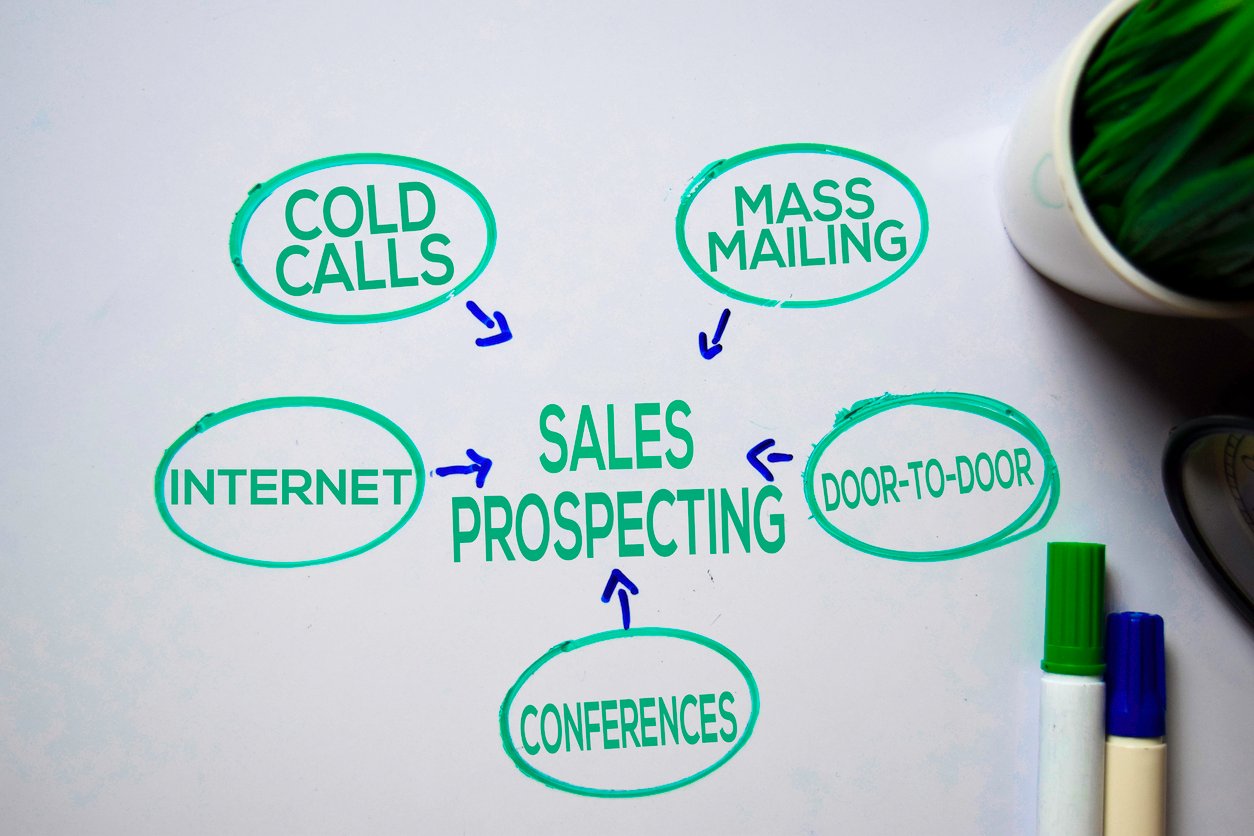
Top 5 Inside Sales Best Practices That Guarantee Results
 Updated on
Updated on
 By Carlos Correa
By Carlos Correa
Carlos Correa
Carlos has been involved in the sales space for well over ten years. He began in the insurance space as an individual sales agent, managing teams as s...
learn more
Carlos Correa
Carlos has been involved in the sales space for well over ten years. He began in the insurance space as an individual sales agent, managing teams as s...
Table of Contents
Table of Contents
Inside sales can be a pretty gruelling job.
You're stuck inside all day, dialing phone number after phone number and facing rejection after rejection. We get it.
It's not all doom and gloom, though.
Forward-thinking software and tech companies are built on the back of inside sales teams, driving revenue and new customer acquisition through relentless communication tactics.
So, there's a deep sense of pride to be gained from succeeding in an inside sales role, and don't even get us started on the exhilarating thrill experienced each time you close a huge deal.
But, this success doesn't come on all on its own.
It takes a thorough understanding of the common issues faced by inside sales reps (and how to solve them), the best practices for inside sales growth, and the tools you'll need to arm yourself with to get to the top.
You're in luck - these are the very things we're going to discuss in this article.
Let's get started!
Inside Sales vs. Outside Sales

As we've discussed, inside sales reps work within an office environment. They typically communicate with customers in one of five ways:
- Phone call
- SMS
- Video conferencing
- Social media
Outside sales reps, on the other hand, sell outside of the office (no, not literally outside).
You'll find them calling into their customers' offices, meeting for coffee, attending trade shows and conferences, and speaking at industry events.
Outside sales agents generally have a physical office space as well, but it's typically used for administrative tasks more than sales activities.
Importance of Inside Sales in Modern Businesses
Let's start by looking back a couple of years when a 2013 article in the Harvard Business Review signaled an emerging trend in inside sales.
The HBR article stated that outside sales agents (the article called them "field sales" agents) had better methods of developing strategic, face-to-face relationships with clients and stakeholders. But they also admitted the shift towards inside sales vs. outside sales had already begun.
Web conferencing was getting more sophisticated and made product demos easier for an inside sale.
Social media was beginning to dominate, sales-focused SaaS tools were available, and hosted CRM (Customer Relationship Management) became a valued tool for sales growth.
The benefits of an inside sales force came in these key areas:
- Expense reductions: mileage, cell phones, and other costs related to flight travel or overnight stays.
- Improved organization: for inside sales vs. outside sales, there's no contest. The structure of inside sales is better organized for training or meetings.
- Scale from automation: software like CRMs take on time-consuming and tedious activities, allowing inside sales reps to focus on what's valuable to them.
And that was just the start. Fast forward just 8 years, and nearly half of the US salesforce has shifted over to the inside sales model.
This has resulted in a 9.8% increase in the achievement of sale quotas compared to outside sales results.
Of course, we should also notice that big, scary, multi-strained elephant in the room:
Pandemic-related restrictions have forced virtually all sales reps into an ‘inside' role, with 90% of agents moving to a phone and video conferencing-based sales model.
The creators of inside sales tools have pushed hard to meet this need, but not all sales teams are keeping up with the play. As a result, many inside sales reps fall victim to common challenges.
Let's take a look.
What Does an Inside Sales Rep Do?

An inside sales representative is a sales professional who conducts sales activities remotely, primarily over the phone, email, or video conferencing.
Unlike outside sales reps who meet with clients in person, inside sales reps focus on building and nurturing relationships with potential and existing customers through digital channels.
Let's elaborate on it for you below.
1. Key Responsibilities of an Inside Sales Representative
Here are their primary responsibilities:
- Lead Qualification: Inside sales reps assess a prospect's interest and readiness to buy, ensuring that only the most promising leads proceed in the sales funnel. This process often involves tools like CRMs and email outreach platforms to evaluate and categorize leads effectively.
- Prospecting: Prospecting involves identifying new sales opportunities. Inside sales professionals utilize databases, social media platforms, and cold outreach to connect with potential customers.
- Nurturing Relationships: By providing consistent value through follow-ups, product demos, and tailored solutions, these reps keep prospects engaged until they're ready to make a purchase.
- Closing Deals Remotely: Using virtual communication tools like Zoom, Microsoft Teams, or phone calls, they present proposals, address concerns, and seal the deal without the need for in-person meetings.
2. Skills and Qualities That Make an Effective Inside Sales Representative
To excel in inside sales, reps need a combination of these skills and qualities:
- Strong Communication Skills: Effective communication is crucial for building rapport, conveying product information, and addressing customer concerns.
- CRM Proficiency: A deep understanding of CRM software is essential for managing leads, tracking interactions, and analyzing sales data.
- Resilience: Inside sales can be challenging, with rejection being a common occurrence. Resilient individuals can bounce back from setbacks and maintain a positive attitude.
- Time Management Skills: Inside sales reps need to prioritize tasks, manage their time effectively, and meet sales quotas.
- Product Knowledge: A solid understanding of the products or services being sold is essential for answering customer questions and addressing objections.
3. Common Issues Faced by Inside Sales Pros in Daily Work Life

Here are some of the most pressing challenges faced by inside sales representatives:
- Sub-Par Data Management: This often stems from sales managers failing to define clear processes, sales reps not adhering to procedures, or teams using outdated or ineffective CRM tools.
- Time Constraints: Inside sales reps often find themselves bogged down with non-selling tasks, which consume 66% of their work hours. These activities include handling support queries, attending excessive meetings, and completing administrative tasks. While leadership intervention is necessary for structural changes, automating repetitive tasks can free up valuable time, enabling reps to focus more on selling.
- Information Silos: In many inside sales teams, roles like SDRs, BDRs, and AEs create a segmented sales process. When information isn't seamlessly passed between these roles, key details are lost, leading to a disjointed customer experience. This fragmentation can lower conversion rates and increase customer churn, highlighting the need for integrated tools and communication strategies.
- Difficulty Reaching Prospects: Getting in touch with prospects remains one of the toughest challenges, with 80% of sales calls going straight to voicemail. Automated drip campaigns can nurture leads and prompt them to initiate contact. Using local phone numbers can make calls appear more relevant to the prospect, increasing the likelihood of a response. Additionally, analyzing outreach data—such as the best times to call—can significantly improve contact success rates.
- Focusing on Low-Quality Leads: Marketing teams strive to deliver highly qualified leads, but inside sales reps often encounter prospects who are a better fit for future engagement. CRMs with advanced automation features can help maintain communication with these prospects through drip campaigns. This approach ensures that reps focus their time on higher-priority leads while still nurturing long-term opportunities.
Top 5 Inside Sales Best Practices That Guarantee Results
Success in inside sales isn't just about making calls or sending emails—it's about mastering strategies that consistently deliver results. Here are some sales tips and best practices that set high-performing sales teams apart.
1. No Sales Rep Is an Island

If you consider yourself a lone wolf, you might want to come up with a new spirit animal.
There's no harm in being proud, or even competitive, in wanting to close each deal for yourself. But that mentality isn't your friend in the new world of sales.
Autonomy in inside sales (don't confuse that with automation) is on the way out.
So appreciate your backbench support staff for their role in carrying the company flame and the IT department that keeps your digital environment humming.
Most importantly, a communication channel needs to flow between sales and marketing. The "us vs. them" mentality found in the inside sales vs. outside sales debate also applies to the friction between marketing and sales departments.
Marketing is taking on new meaning in a buyer-centric marketplace. It is marketing's responsibility to be on trend with what is making buyers tick, and marketing automation software is increasing efficiency and results.
When inside sales consult with marketing, the positive impacts get reflected in your conversion rates. And when you close more sales, everyone succeeds.
2. You've Gotta Have Mail

Email is still king for cold lead prospecting, and automated email prospecting has made this tactic more effective on all levels.
In a customer-centric, mobile-centric world, the power of automated prospecting applies to texting and SMS messaging as well.
From welcoming new prospects to triggering timed emails with personalized messages, automated email programs do the work to warm up cold leads. At the same time, you concentrate on prospects further into the purchasing journey.
Automated email campaigns can also be tracked to give you data on:
- Open rates
- Click-through rates
- Reply rates
3. Every Lead Gets Followed Up
This one kind of feels like sales 101, but it's still something that inside sales agents fail to nail.
But the numbers don't lie:
Sorry, but you can't just jump straight to the close.
Inside sales managers have a responsibility to enforce carefully developed sales processes that are mirrored in the use of a sales pipeline tool.
4. Learn to Land the Handover

We briefly discussed earlier that as inside sales teams are typically composed of several agents interacting at sequential stages of the sales process, informational silos present a painful challenge.
Implementing a team-wide information management system such as a sales CRM is going to go a long way to fixing this issue, but the handover of leads must also be process-driven.
Three examples of initiatives that can improve the effectiveness of your customer handovers include:
- Weekly meetings between an SDR and an AE to discuss details of each lead being handed off
- A digital handover form that BDRs complete when shifting a prospect over to an AE
- Summary notes at the top of a customer's profile in your CRM
5. Join the Nation of Automation
If you've been in inside sales for a few years, you're probably well-versed in sales analysis and forecasting. Yes, sales analysis is essential.
But people-powered analysis and forecasting can be numbing.
Welcome to the future, and it's looking sweet. AI (artificial intelligence) now collects precise sales data and makes forecasts accurate.
AI is hugely influential in sales tasks, particularly in data collection and interpretation of buying and selling trends and customer feedback throughout the purchasing journey. Using AI to fuel inside sales effectiveness is more than a best practice, it's a game-changer.
If your inside sales team isn't automated yet, consider this.
Sales automation is no longer just a trendy talking point. It's a necessity. We're not confusing that with a necessary evil—because the role of automation is not to rob inside sales of creativity or drive.
The truth is, sales automation lets your inside sales team shine even more.
Delegating tedious tasks to dedicated sales automation tools allows people to focus on delivering each inside sale.
Sales automation efficiently scales down your processes while widening the sales funnel. Your team gains a competitive edge and feels newly liberated.
In today's world, sales automation is our top recommendation of all inside sales best practices.
Top Tools for Boosting Inside Sales Performance
Even inside sales teams who've nailed the industry's best practiced and developed best-in-class sales techniques owe a lot to their tech stack and ancillary equipment.
Criteria in Choosing Inside Sales Software/CRM
The right tools can significantly enhance the efficiency and effectiveness of an inside sales team. When selecting inside sales software or a CRM, consider the following criteria:
|
Criteria |
Description |
Why It Matters |
|
Ease of Use |
The software should have an intuitive interface and minimal learning curve. |
User-friendly tools reduce onboarding time and enable sales reps to focus on selling rather than troubleshooting software. |
|
Integration Capabilities |
The ability to integrate with other essential tools like email, marketing software, or ERP systems. |
Seamless integration ensures a smooth workflow and eliminates the need for manual data transfer between systems. |
|
Automation Features |
Includes automation for tasks like lead scoring, follow-up emails, and data entry. |
Automation saves time, reduces errors, and ensures consistent follow-up, enabling reps to focus on building relationships. |
|
Customization Options |
Flexibility to tailor workflows, reports, and dashboards to meet specific team needs. |
Customizable solutions allow businesses to align the software with their unique processes and priorities. |
|
Analytics & Reporting |
Robust analytics features to track key metrics like conversion rates, lead response times, and pipeline health. |
Insightful reports help managers make data-driven decisions and identify areas for improvement in the sales process. |
Types of Software Tools for Inside Sales
So, what kind of software tools are required for an inside sales team to succeed?
We'd say a selection of these should do the trick:
|
Sales software type |
How inside sales teams use it |
|
CRM platform |
The number one tool in your inside sales arsenal is CRM. It's where you store all of your customer contact information and communication records, and where the majority of your reporting exists. In short, it's where all the action happens. |
|
Sales prospecting |
Sales prospecting tools such as LinkedIn Sales Navigator allow inside sales agents to identify new potential customers, or gather useful information on existing prospects. |
|
Sales engagement |
Sales engagement tools enable reps to automate email sequences, social media messages and even prepare your phone call list for the day. |
|
Calling and tracking |
The majority of the inside sales rep's role revolves around the phone. So, a successful salesperson needs an effective method of dialing and receiving calls (usually using VoIP), that integrates with their CRM and keeps track of all interactions. |
|
Appointment and scheduling |
If you want to spend a significant chunk of time qualifying a prospect, the best practice is usually to book in time for a call or video chat. To do this, sales reps need an effective and appointment scheduling tool that plays nicely with whichever calendar client they are using. |
|
Productivity |
Big wins in the sales game often come from small adjustments. Productivity tools can help you become more efficient as a sales rep, prompting you to chunk your day into 90-minute calling sessions, or automatically dialing phone numbers until you get an answer. |
|
Sales intelligence |
Sales intelligence tools scrape the internet and use AI algorithms to power up your sales process by providing relevant data, recommendations, and insights into customer behavior. |
|
Proposal/quotation generation |
Inside sales reps on the closing end of the sales process require a straightforward method for generating new proposals. This is often achieved through template-based quotation tools. |
|
Asset management |
Inside sales aren't just about what you can say, it's about what you can show. For that reason, many inside sales team members rely heavily on content and marketing collateral to support their sales efforts. If you plan on doing the same, then you'll need to determine how best to store and access all of those assets. |
Don't forget, too, that sales reps are real people with real bodies. That is, they can't get by on sales software solutions alone.
Physical tools that empower an inside sales rep to really succeed include:
- A laptop that allows them to work from home if required
- A wireless headset for handsfree calling (important for taking notes)
- Two monitors, giving reps access to more screen real estate and increases productivity.
- A comfy, ergonomic chair - after all, they're probably going to be sitting all-day
- Standing desks - but maybe they don't want to be!
That's a lot of stuff and a lot of software.
The good news is, an inside sales software system actually covers a few of those bases (and integrates nicely with tools that handle the rest).
7 Benefits of an Inside Sales Software System

Wondering what an inside sales software system can do to power up your team? Turns out, quite a bit:
1. Improved customer contact cadence
Great inside sales software systems make it easy for agents to visualize their sales process, stick to it and improve it.
Insightful reporting informs necessary procedural changes, and automated communication strategies ensure that all prospects receive consistent and optimized messaging.
2. Better lead management
These software platforms prevent common challenges faced by busy reps, such as forgetting to get back to a customer or neglecting prospecting duties.
Remember how most salespeople give up on a lead just after one call?
After implementing an inside sales software system, sales leaders have better visibility overactivity and can coach more effectively.
3. Reduced management time
This, in turn, makes it easier for sales leaders to manage their teams and gives them the bandwidth needed to manage larger teams.
They'll spend less time asking reps what they've got cooking, and more time coaching and developing new sales skills and optimizing the processes that they are using.
4. Fewer human errors
Nobody's perfect. We all screw up from time to time.
However, savvy sales leaders can limit the amount of human error accumulated by their team by setting strict boundaries within their inside sales software platform.
For example, activities can be set so that they are unable to be completed without some form of note entered from a sales rep.
Yes, we know, you just want to get to sealing the deal, but accurate data is important.
5. More efficient sales processes
Automation is a massive timesaver for sales reps, and this is typically handled by their inside sales software platform.
Such automation makes sales processes more efficient by:
- Sending templated emails at predefined intervals
- Moving deals through a pipeline after specific activities are completed
- Notifying reps when sales activities become overdue
6. Greater accessibility of data
Inside sales software creates a single point of truth; a single home for all of your customer data to live.
This not only makes it easier to find when you need it, but it means that others can find it. This makes everyone's life easier when, for example, you're homesick for a week and someone else needs to take over some of your leads.
Centralized data also leads to…
7. Improved reporting and analytics
Sales reporting can be a pretty painful process if your data is all over the place.

Many sales managers have wasted hours each month deep in spreadsheet hell.
But by implementing an analytics-focused inside sales system, the start of each day gets a lot easier for sales professionals and sales team leaders.
If it's your job to eat a frog, it's best to do it first thing in the morning. And If it's your job to eat two frogs, it's best to eat the biggest one first. - Mark Twain
Knowing what needs to be done from the moment you open up your computer to start work starts you off on the right foot, it helps the sales team feel confident that every member is going to have some momentum that can carry them through the day. When a leader or team member sits down, there won't be any distractions or questions as to what needs to be done first. Leaders can simply open up their sales dashboard and access all of the insights they could ever need, in an instant.
The clarity that your team (or yourself) can experience every morning is priceless. But just in case you are curious about the price, have a look for yourself.
Summary
With remote work technology improving year on year, and companies quickly realizing the immense benefits offered by enlisting an inside sales team, it's safe to say that the role isn't going anywhere any time soon.
Of course, if you're determined to get to the top of the pack of hungry inside sales agents, you're going to need to take heed of these 5 inside sales best practices:
- Use the support of your entire team
- Leverage email and SMS technology
- Ensure every lead is followed up (more than once)
- Nail your prospect handover process
- Embrace sales automation tools
Of course, you're going to need a forward-thinking inside sales software platform to help you achieve all of that. And just in case you might be a little curious, our reviews say a lot about how much we are able to help teams and people just like you.
Oh hey, that's us. Either request a demo of our platform or…

Skyrocket your sales with the CRM that does it all.
Calling? Check. SMS? Check. Automation and AI? Check. Effortlessly keep in touch with your customers and boost your revenue without limits.

Take your sales to new heights with Ringy.
Sales in a slump? Ringy gives you the tools and flexibility you need to capture leads, engage with them, and turn them into customers.
Subscribe to Our Blog
Enter your email to get the latest updates sent straight to your inbox!
Categories
Related Articles



































































































